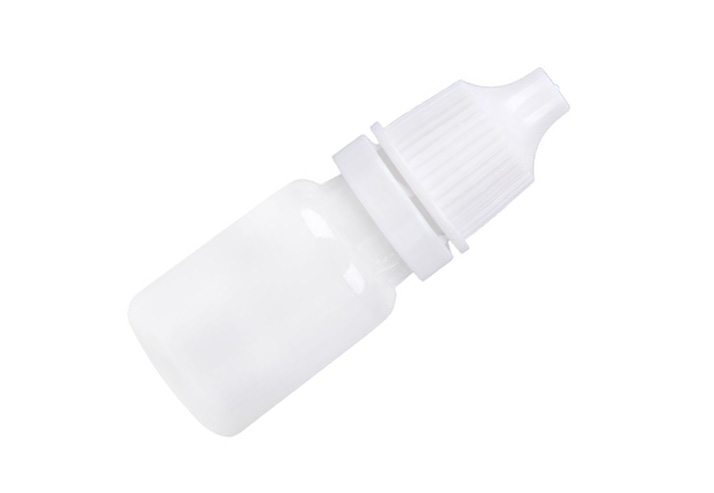Ocuflox
Ocuflox contains an antibiotic as an active ingredient and is intended for the treatment of strictly superficial eye infections.
Medicine is primarily used to treat bacterial conjunctivitis (pink eye) and corneal ulcers. It belongs to the fluoroquinolone class of antibiotics, which are effective against a wide range of bacteria.
What Does Ocuflox Contain?

Active ingredients
Ofloxacin 3 mg/ml
Excipients
Benzalkonium chloride, hydrochloric acid, sodium hydroxide, sodium chloride, water for injection.
Forms and Strengths
Ocuflox eye drops: 5 ml multi-dose container/dropper bottle.
Uses
In children and adults
Unless otherwise prescribed by a doctor, instil 1 drop into the conjunctival cul-de-sac of the affected eye, 4 times a day.
Experience with ofloxacin-containing eye drops in children is limited.
Continue treatment according to your doctor's instructions even if you no longer feel any symptoms. Stopping treatment prematurely or using it for too long may result in a new outbreak of the infection.
Do not change the prescribed dosage on your own initiative. Contact your doctor or pharmacist if you feel that the drug is too weak or too strong.
Side Effects
Ocuflox may cause the following side effects:
Occasional (affects 1 to 10 users out of 1000)
Local burning sensation, tingling or slight pain after use, photosensitivity.
Local ocular hypersensitivity reactions, taste and smell disorders.
Rare (affecting 1 to 10 users out of 10,000)
Corneal deposits, particularly in the presence of pre-existing corneal damage.
Very rare (affects less than 1 in 10,000 users)
Generalised allergic reactions of the body such as asthma, breathing difficulties, urticaria, oedema or redness of the skin and mucous membranes, itching.
Consult your doctor immediately if you experience any of these signs.
The active ingredients contained in ophthalmic preparations can pass into the bloodstream. This is why side effects can also affect the rest of the body.
If you notice any side effects, please inform your doctor or pharmacist. This applies in particular to side effects not mentioned in this package leaflet.
Precautions
During treatment with Ocuflox, you should avoid unnecessary exposure to the sun or ultraviolet rays (e.g. tanning lamps, solariums, etc.), as these may cause skin reactions (redness, sun allergy).
In patients receiving oral or intravenous fluoroquinolone treatment, oedema and tendon rupture (which may manifest as pain in the musculoskeletal system) have occurred, particularly in elderly patients and in patients receiving concomitant corticosteroid treatment.
Stop using Ocuflox if your tendons become swollen or painful (tendonitis) and consult a doctor.
Ocuflox multi-dose/dropper bottle eye drops contain benzalkonium chloride (0.843 µg benzalkonium chloride per drop equivalent to 0.025 mg/ml).
Benzalkonium chloride may be absorbed by soft contact lenses and change their colour. Take out your contact lenses before using the product, and wait a minimum of 15 minutes before putting them back in..
Benzalkonium chloride can cause eye irritation, particularly for those with dry eye syndrome or corneal disorders (the transparent layer at the front of the eye).
As your vision may be blurred immediately after applying eye drops, do not drive or operate machinery for at least 20 minutes after applying Ocuflox!
Please tell your doctor or pharmacist if you are suffering from any other illnesses, if you have any allergies or if you are taking any other medicines (including self-medication!) or applying any other medicines to the eye.
What else do you need to consider?
Remember that your doctor has prescribed this medicine to treat your current eye problems. This medicine must not be used to treat other diseases or other people.
The antibiotic contained in Ocuflox should not be used indiscriminately to combat all the micro-organisms responsible for eye infections. To avoid prolonged complications that could result from the use of an antibiotic that has been incorrectly chosen or used at an inappropriate dose, you should not use Ocuflox without a doctor's prescription (even if you subsequently develop a new infection).
Attention contact lens users: Do not wear contact lenses while treating an eye infection.
When should Ocuflox not be used?
In the event of known hypersensitivity to one of its components (ofloxacin, benzalkonium chloride) or to chemically related antibiotics (quinolones).
Pregnancy and Breastfeeding
During pregnancy or when breast-feeding, Ocuflox should only be used if specifically prescribed by your doctor.
What is conjunctivitis?
Conjunctivitis is characterised by inflammation of the conjunctiva, the transparent membrane that lines the white part of the eye and the inside of the eyelid. It can affect both eyes or just one, causing irritation, redness and often a feeling of sand or a foreign body in the eye.
This condition can have a variety of causes, including infection, allergy or exposure to irritants. Depending on the cause, it can range from mild to severe, and can cause clear or purulent discharge, temporary blurred vision and significant discomfort.
It can affect people of all ages, children and adults alike. Certain forms occur more frequently depending on the season, in particular allergic conjunctivitis, which peaks in spring and summer.
Recognising the signs early and consulting a GP or ophthalmologist can help diagnose the underlying cause.



